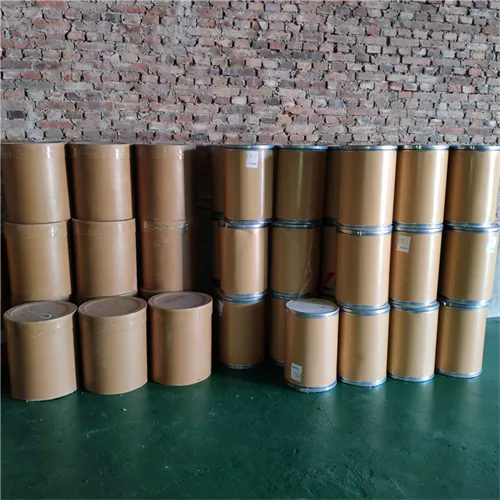4-Biphenylacetic acid
Synonym(s):4-Biphenylacetic acid
- CAS NO.:5728-52-9
- Empirical Formula: C14H12O2
- Molecular Weight: 212.24
- MDL number: MFCD00004351
- EINECS: 227-233-2
- SAFETY DATA SHEET (SDS)
- Update Date: 2025-01-27 09:38:02

What is 4-Biphenylacetic acid?
Description
Felbinac Is the active metabolite of the non-steroidal antiinflammatory agent, fenbufen. Applied topically as a gel to joints, it is useful in the symptomatic relief of articular inflammation and pain.
Chemical properties
Off-white powder
Originator
Lederle (USA)
The Uses of 4-Biphenylacetic acid
4-Biphenylacetic acid was used in the synthesis of gastrosparing non-steroidal antiinflammatory drug.
The Uses of 4-Biphenylacetic acid
Anti-inflammatory, analgesic drug.
What are the applications of Application
4-Biphenylacetic acid is a potential non-steroidal antiinflammatory drug
Definition
ChEBI: Biphenyl-4-ylacetic acid is a monocarboxylic acid in which one of the alpha-hydrogens is substituted by a biphenyl-4-yl group. An active metabolite of fenbufen, it is used as a topical medicine to treat muscle inflammation and arthritis. It has a role as a non-steroidal anti-inflammatory drug. It is a member of biphenyls and a monocarboxylic acid. It contains a biphenyl-4-yl group. It is functionally related to an acetic acid.
brand name
Dolinac (Wyeth-Ayerst); Flexfree(Wyeth-Ayerst); Napageln (Wyeth-Ayerst); Target (Wyeth-Ayerst); Traxam (Wyeth-Ayerst).
General Description
4-Biphenylacetic acid is a potential non-steroidal antiinflammatory agent and forms solid inclusion complex with β-cyclodextrin. 4-Biphenylacetic acid on interaction with quinolone antibacterial agents induces functional blockade of the γ-aminobutyric acid receptors.
Safety Profile
Poison by subcutaneous route.Moderately toxic by ingestion and intraperitoneal routes.An experimental teratogen. Other experimentalreproductive effects. When heated to decomposition itemits acrid smoke and fumes.
Properties of 4-Biphenylacetic acid
| Melting point: | 159-160 °C (lit.) |
| Boiling point: | 312.08°C (rough estimate) |
| Density | 1.1035 (rough estimate) |
| refractive index | 1.6000 (estimate) |
| storage temp. | 2-8°C |
| solubility | DMSO: soluble50mg/mL, clear, colorless to yellow |
| pka | 4.29±0.10(Predicted) |
| form | Powder |
| color | Beige |
| Water Solubility | 39.27mg/L(25 ºC) |
| Merck | 14,3316 |
| BRN | 1211592 |
| InChI | InChI=1S/C14H12O2/c15-14(16)10-11-6-8-13(9-7-11)12-4-2-1-3-5-12/h1-9H,10H2,(H,15,16) |
| CAS DataBase Reference | 5728-52-9(CAS DataBase Reference) |
Safety information for 4-Biphenylacetic acid
| Signal word | Danger |
| Pictogram(s) |
 Skull and Crossbones Acute Toxicity GHS06 |
| GHS Hazard Statements |
H315:Skin corrosion/irritation H319:Serious eye damage/eye irritation H335:Specific target organ toxicity, single exposure;Respiratory tract irritation |
| Precautionary Statement Codes |
P261:Avoid breathing dust/fume/gas/mist/vapours/spray. P264:Wash hands thoroughly after handling. P264:Wash skin thouroughly after handling. P301+P310:IF SWALLOWED: Immediately call a POISON CENTER or doctor/physician. P302+P352:IF ON SKIN: wash with plenty of soap and water. P305+P351+P338:IF IN EYES: Rinse cautiously with water for several minutes. Remove contact lenses, if present and easy to do. Continuerinsing. |
Computed Descriptors for 4-Biphenylacetic acid
| InChIKey | QRZAKQDHEVVFRX-UHFFFAOYSA-N |
| SMILES | C1(C2=CC=CC=C2)=CC=C(CC(O)=O)C=C1 |
New Products
p-Toluenesulfonyl hydrazide N-octanoyl benzotriazole 3-Morpholino-1-(4-nitrophenyl)-5,6-dihydropyridin- 2(1H)-one ELECTROLYTIC IRON POWDER 1,1’-CARBONYLDIIMIDAZOLE R-2-BENZYLOXY PROPIONIC ACID 4-HYDROXY BENZYL ALCOHOL 1,1’-CARBONYLDI (1,2-4 TRIAZOLE) 1-(2,4-DICHLOROPHENYL) ETHANAMINE 4-Bromopyrazole 1-Boc-4-cyanopiperidine 5-BROMO-2CYANO PYRIDINE 5,6-Dimethoxyindanone Cycloleucine 1-Aminocyclobutanecarboxylic acid 1-Amino-1-cyclohexanecarboxylic acid 1-(2-Ethoxyethyl)-2-(piperidin-4-yl)-1H-benzo[d]imidazole hydrochloride TETRABUTYLAMMONIUM CYANIDE Ethyl 2-cyano-2-(hydroxyimino)acetate (S)-1-Benzyl 2-methyl pyrrolidine-1,2-dicarboxylate 2-Amino-3-nitrobenzoic acid methyl ester N1,N2-Dibenzylethane-1,2-diamine 3-(4-Morpholinyl)aniline 4-methoxy-3,5-dinitropyridineRelated products of tetrahydrofuran








You may like
-
 5728-52-9 Felbinac 98%View Details
5728-52-9 Felbinac 98%View Details
5728-52-9 -
 5728-52-9 99%View Details
5728-52-9 99%View Details
5728-52-9 -
 Felbinac 98%View Details
Felbinac 98%View Details -
 Felbinac 5728-52-9 98%View Details
Felbinac 5728-52-9 98%View Details
5728-52-9 -
 4-Biphenylacetic Acid CAS 5728-52-9View Details
4-Biphenylacetic Acid CAS 5728-52-9View Details
5728-52-9 -
 Felbinac CAS 5728-52-9View Details
Felbinac CAS 5728-52-9View Details
5728-52-9 -
 52-52-8 Cycloleucine 98+View Details
52-52-8 Cycloleucine 98+View Details
52-52-8 -
 1-Aminocyclobutanecarboxylic acid 98+View Details
1-Aminocyclobutanecarboxylic acid 98+View Details
22264-50-2